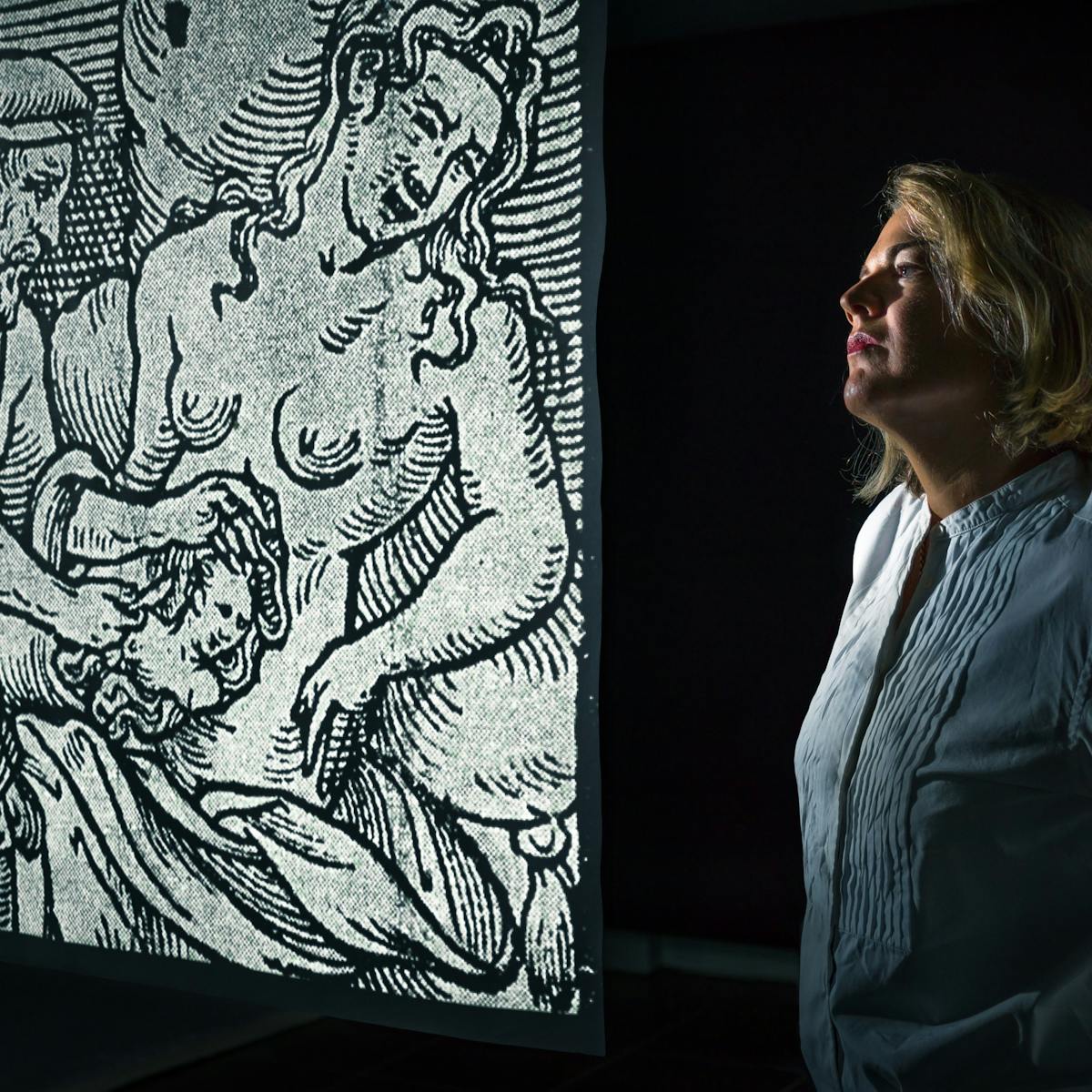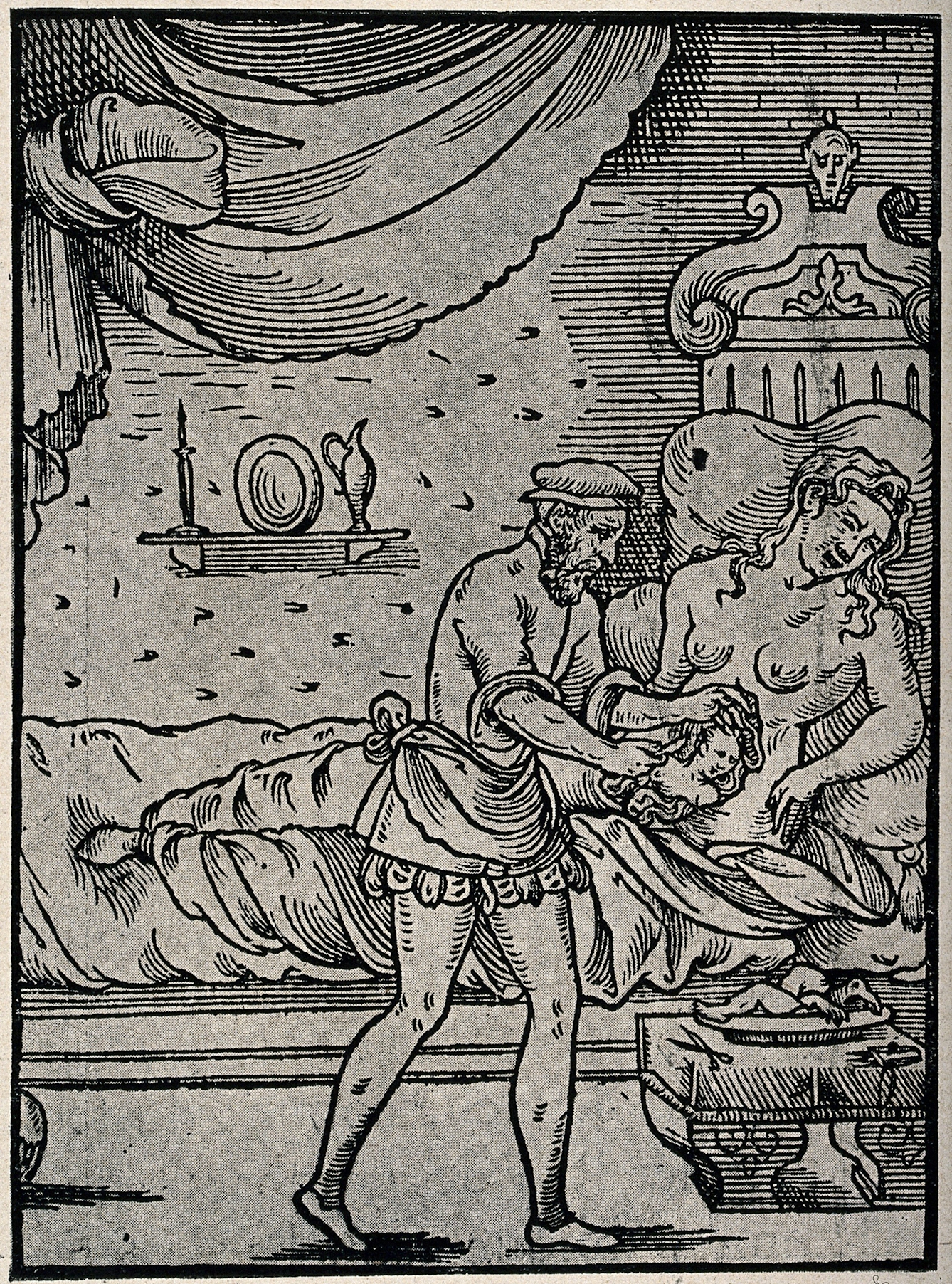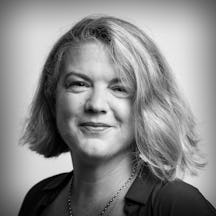A woodcut showing a long-dead foetus being removed by caesarean awakened Anna Blundy’s thoughts about her own womb. Here she explores her personal story, focusing on one of the most symbolic – and hidden – parts of the female anatomy.
The secret hystery of a womb
Words by Anna Blundyaverage reading time 8 minutes
- Article

Apart from a very half-hearted effort to stop anyone growing in it, I didn't give much thought to my womb as a teenager. Even when someone did, in fact, make a concerted effort to grow in it and I prevented them – for which I felt shame – I still didn't consider the actual organ, the bloody tissue, the empty or occupied, well or diseased space, the thing that might one day come into use and might one day be removed through a slash in my abdomen. Or not, as the case may be.
Psychoanalysis (of which I have experienced and administered much – I’m a psychoanalytic therapist as well as a writer) would perhaps argue that I was averse to being female and to thinking about the things that define me as a female mammal. That, in short, I have penis envy and prefer to concentrate on my imaginary phallus than to think about my vagina, the dark space to which it leads and what terrifying things might then happen there. Have happened there.
And it’s true that when I was pregnant with my son across 1997 and 1998, when I was 27, I was stunned every single day to discover that I am, after all, a female mammal. A huge lumbering creature, puffy-eyed and swollen-breasted, all ready for that quintessentially mammalian activity that defines me and my fellow lady beasts: suckling our young.
I often shushed my then husband, the male mammal who helped plant this alien in my actual body, my actual womb, saying, “Be quiet. I am making a person. I am just busy with the spinal cord.” For I wasn't a person any more – I was two people.
I know that 27 isn’t really young to have your first child, but it was young for my demographic. I went to the gym a lot, did antenatal yoga, hadn't smoked since I was 21 and was planning to force this child out of my womb through my vagina as nature (bafflingly) intended.
A wonderful morphine dream
I realise now how insane the frantically peddled idea of ‘natural’ birth is. I know the statistics for infant and maternal death in childbirth and I know why they have improved: science, medicine, doctors, hospitals, intervention. I wouldn't choose to have my appendix out with no anaesthetic because I want to experience the operation more ‘naturally’. What can I say? I was young(ish) and I was stupid. So I tried to have my baby naturally. And I failed. For which I felt shame.
As the baby’s heart rate plummeted and mine skyrocketed, the soothing music was switched off, the dimmed lights turned up and the soft voices took on a loud edge of hysteria. Strapped to the gurney to stop my intense spasming, I was rushed into theatre listening to shouts about blood matches and the terrifying muttered suggestion of a vertical cut through my abdomen instead of the neat little ‘bikini-line’ scar caesarean mums hope for.
I lost 40 per cent of my blood, and when I left London and took up my job as Moscow correspondent for the Times exactly two months later, my lips and fingertips were still blue. I have a huge side-to-side scar across the bottom of my tummy. Fifteen years after the birth, a hideous fold of soft flesh began to fall over it – for which I felt shame.
More: Daisy Johnson writes about a gynaecological condition no one mentions.

A surgeon performing a Caesarean operation on an agonized woman who had apparently been carrying a dead baby in her womb for five years. Reproduction, 1933, of a woodcut, 1560.
The womb that was sewn up as I sank into a wonderful morphine dream after my son’s birth was sliced open again two years later for the exit of my second child, a daughter. I’m not entirely joking when I say I had a second baby mainly so I could spend another week in hospital on morphine, watching Wimbledon.
It was another two years after that, one of which was characterised by daily bleeding and chronic pain, that five tiny cuts, one right through the middle of my tummy button, were made for the laparoscopic removal of endometriosis, a condition of the womb lining. The womb lining! Basically, the endometrium bleeds where it shouldn't and the blood builds up in the spaces it finds; it clots and is generally vile (for which I felt shame).
A doctor told me of an urban myth he heard in medical school about a female patient whose monthly nosebleeds were found to be the result of bit of her endometrium winding up in her nose and bleeding there – as in having a period – every month.
My son is now twenty and it’s funny to think of him as ever having been a baby – he is big and hairy and plays the double bass.
Still hoping for another baby
In recent years my lower-back pain and heavy periods turned into lower-back agony and a constant period so heavy that I had to change my uncomfortably huge Tampax (don’t forget, I didn't have vaginal births – no wetting myself on trampolines here) and huge pillow of a sanitary towel every half an hour. One doctor told me that blood was pooling in my pelvic cavity. Pooling in my pelvic cavity, I tell you. Sex, hardly on the cards since my daughter was born, was something that made one ritzy hotel room look like the site of an horrific massacre.
I was 43 at the time and, perhaps insanely, still hoping for another baby; get one in before the doors close, that kind of thing. But the very man who did my pregnancy scans did another one now, a painful internal one with a condom (a condom!) stretched over the huge intruding wand. He looked sad. Instead of, “There’s baby!” he said, “You must feel awful.” I said, “I do.”
I’m not entirely joking when I say I had a second baby mainly so I could spend another week in hospital on morphine, watching Wimbledon.
I cried all the way home – about the passing of time, about still being lonely, still going to all these horrible appointments on my own, about being female.
After that I bled. And bled. And bled more. The clotting was so bad that every time I went to the loo it was like having a miscarriage, giving birth to huge clots. I would weep, sitting on a toilet full of blood. (For which I felt shame.)
All this, apparently, was the arrival of the perimenopause. Oh, joy. Okay, not joy, but having a name for it, and it being something everyone (apart from blokes) goes through, meant I finally started talking about my womb. And I found that all these other women, my fellow female mammals, were suffering under their trousers too, at the same time as laughing, working, mothering, fucking, drinking, shining. “Oh God, the night sweats!” “Do your joints ache?” “I keep losing my shit.” “The blood!”
A gynaecologist put me on Norethisterone, a drug that completely stopped the bleeding but made me swell up so badly that my eyes went all Donald Trump and I couldn't get my rings on. It gave me an insane appetite for cake, made my whole body hurt and sent my blood pressure off the charts.
My womb is still in there
It was time to address the now entirely unwanted presence of my womb. But there was a problem. The surgeon said, “Your ovaries are adhered to your bowel, so if we remove them along with the womb there is a 5 per cent risk of piercing the bowel. If you are not okay with a colostomy bag then we won’t do a hysterectomy.”
I was not okay with a colostomy bag. For which I felt shame.
I had a virtual hysterectomy instead. Every three months I have a massive injection in my arse that induces menopause. And I take HRT. I’m now in my late forties, and for the first time in at least a decade, I feel great. But my womb is still in there. Lurking, useless and probably withered or, at the very least, withering.
Suddenly, I'm intensely aware of this usually invisible part of my body at the moment it, and I as a female mammal, become redundant. I say “usually invisible”, because you can catch more than a glimpse of it in the grainy and shockingly gory video of my daughter’s birth, from the first slash and the blood beading along the cut in my white stomach to the final bright blue stitch.
This is a bereavement. A silent one. Periods arrive with a wince of shame; the post-pregnancy carnage of stitches, stretching, piles and blood must be hidden under a smile, a diet and a new lipstick; and so the end must be met with silent horror too. Something to bear, to get used to and eventually to wear with, at best, equanimity.
But I am 48 now, a woman, a female mammal, and I feel no more shame.
About the author
Anna Blundy
Anna Blundy is a journalist and novelist who retrained as a psychotherapist and founded The Mind Field. Her books include five thrillers featuring Faith Zanetti, a war correspondent.
